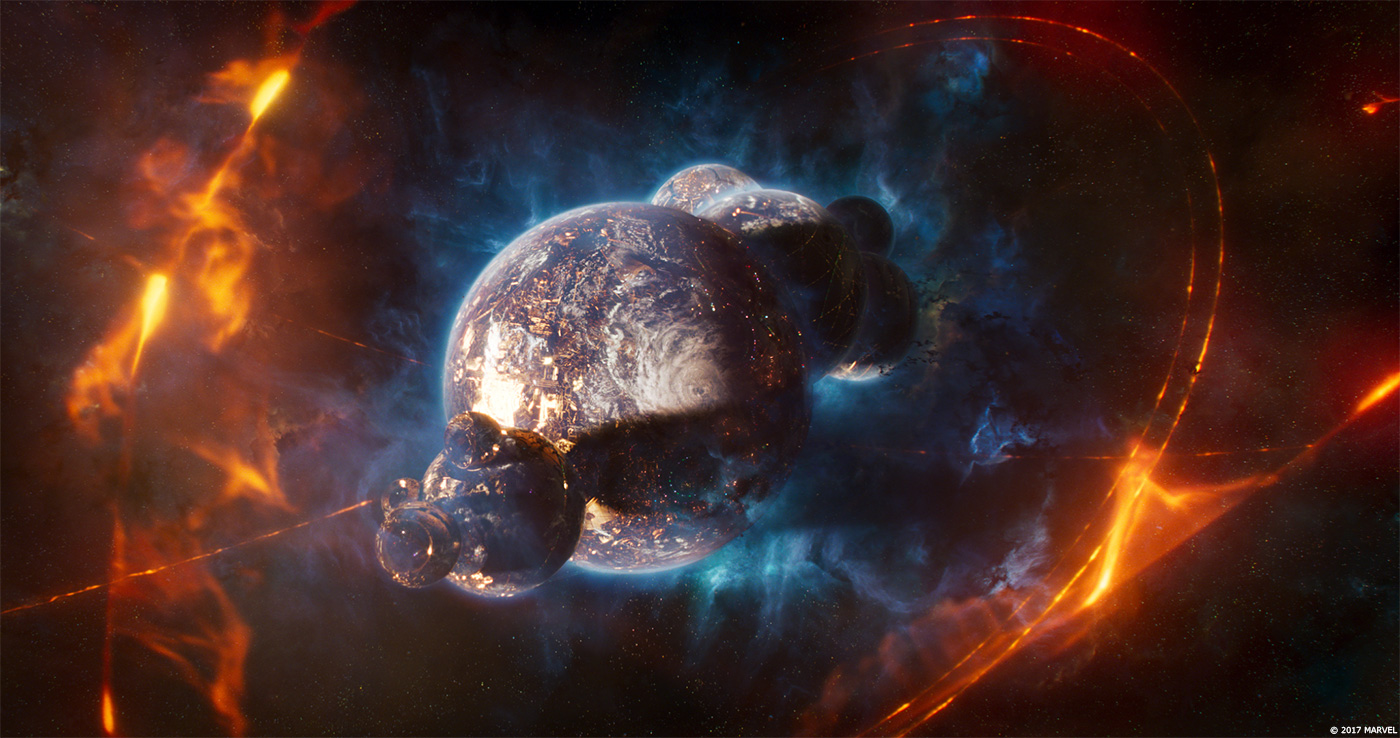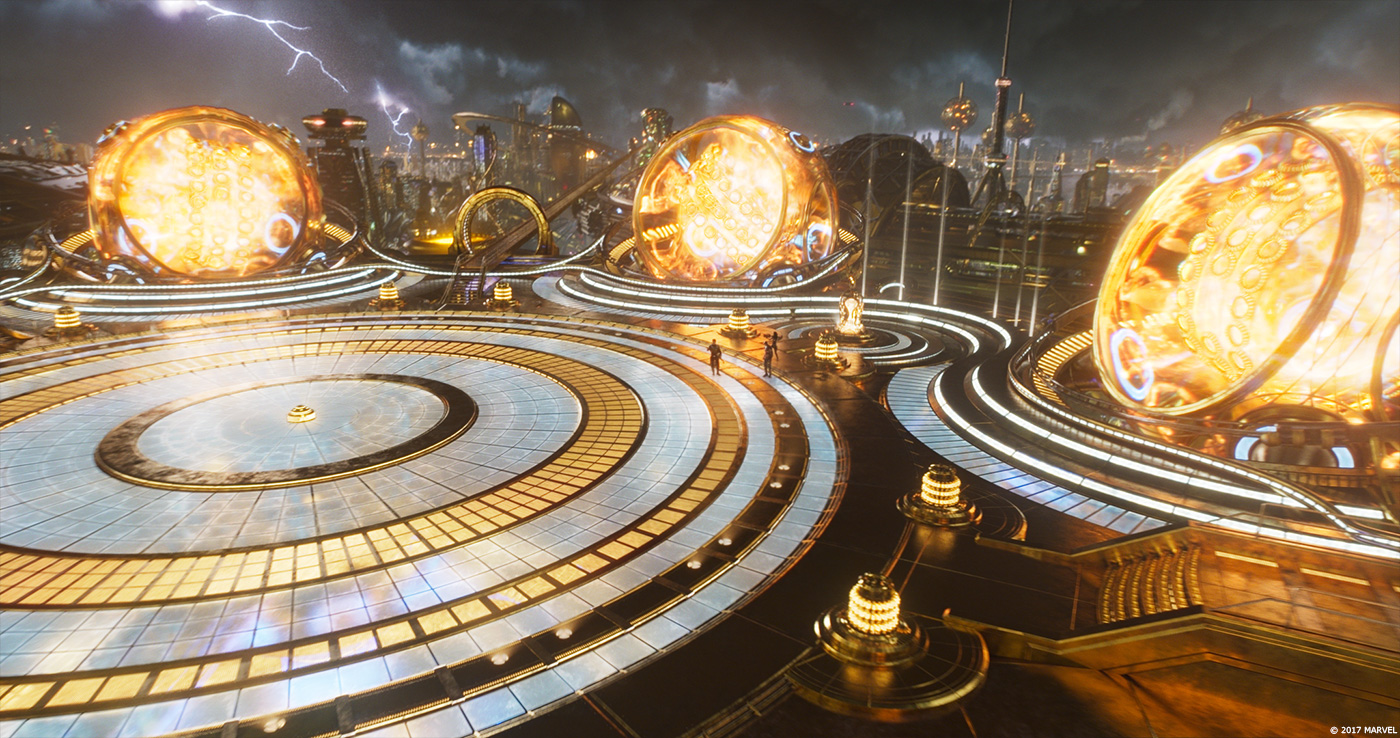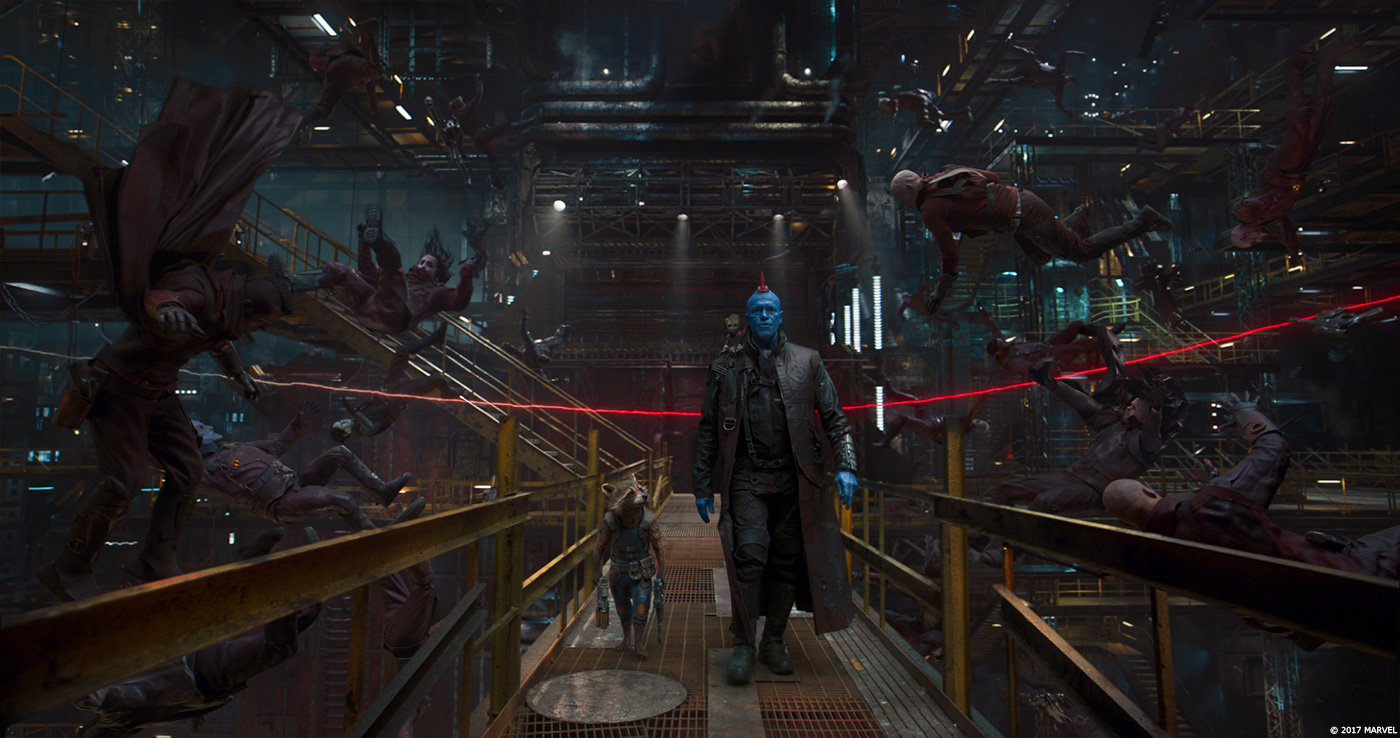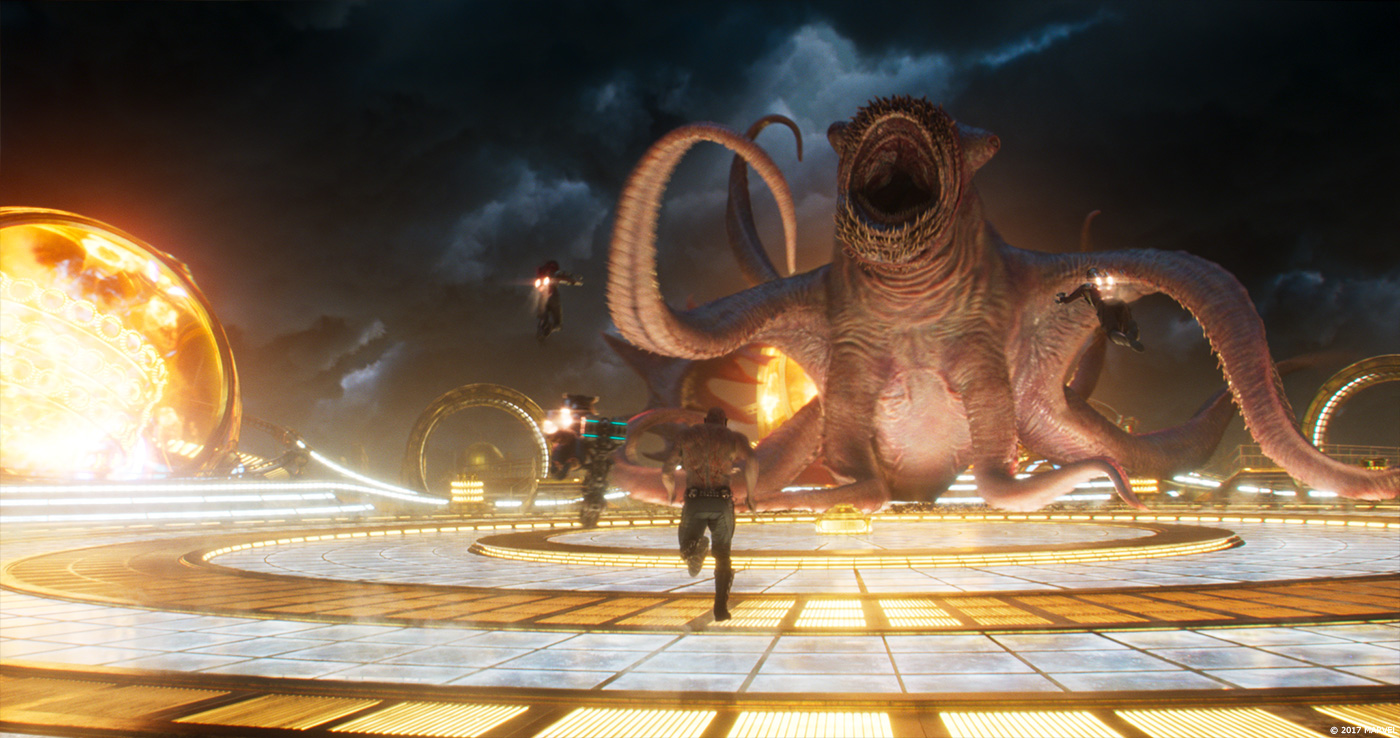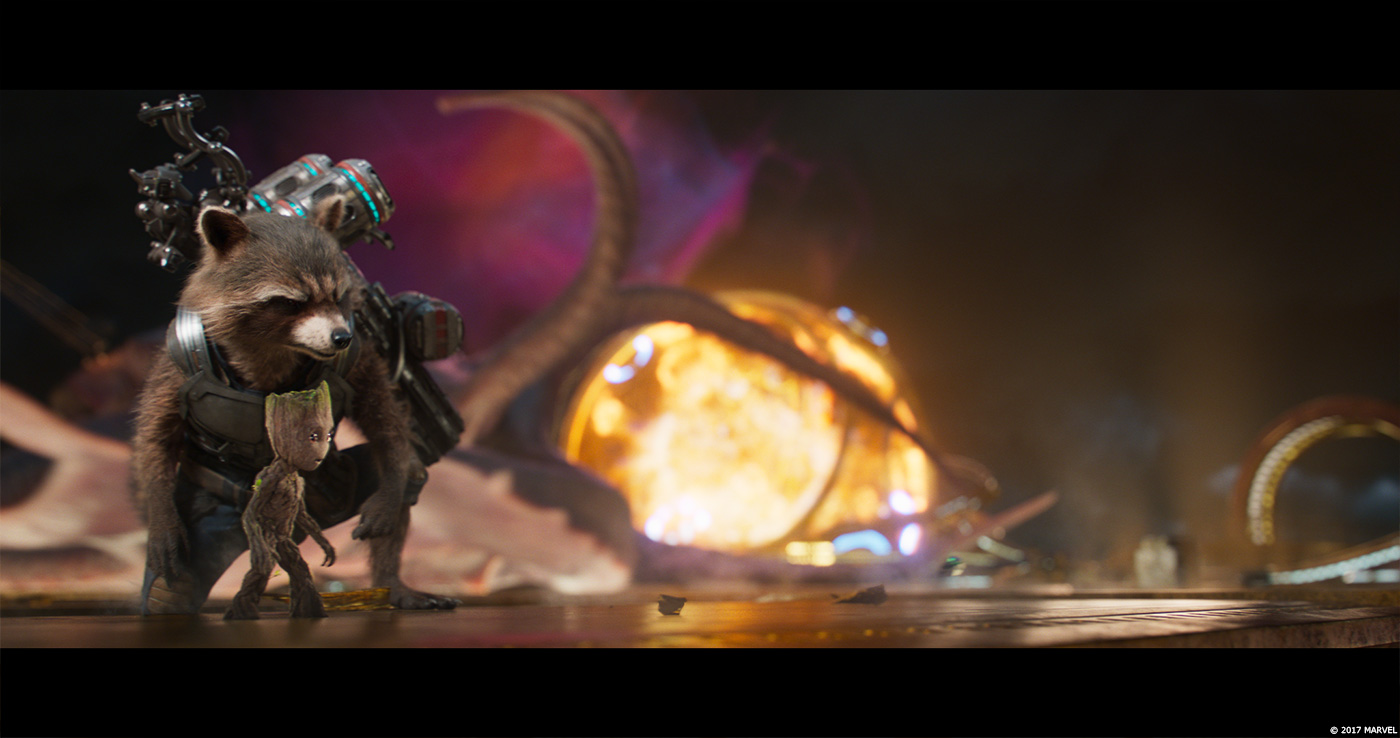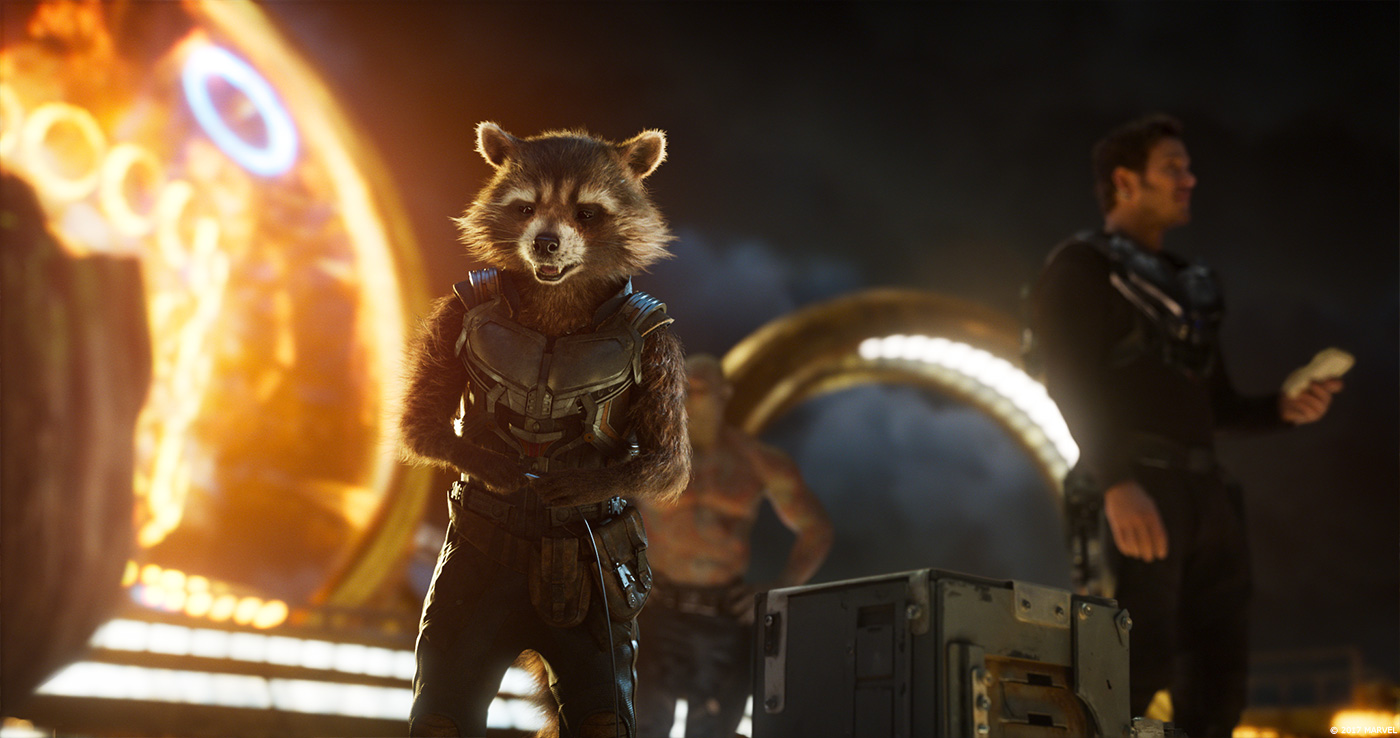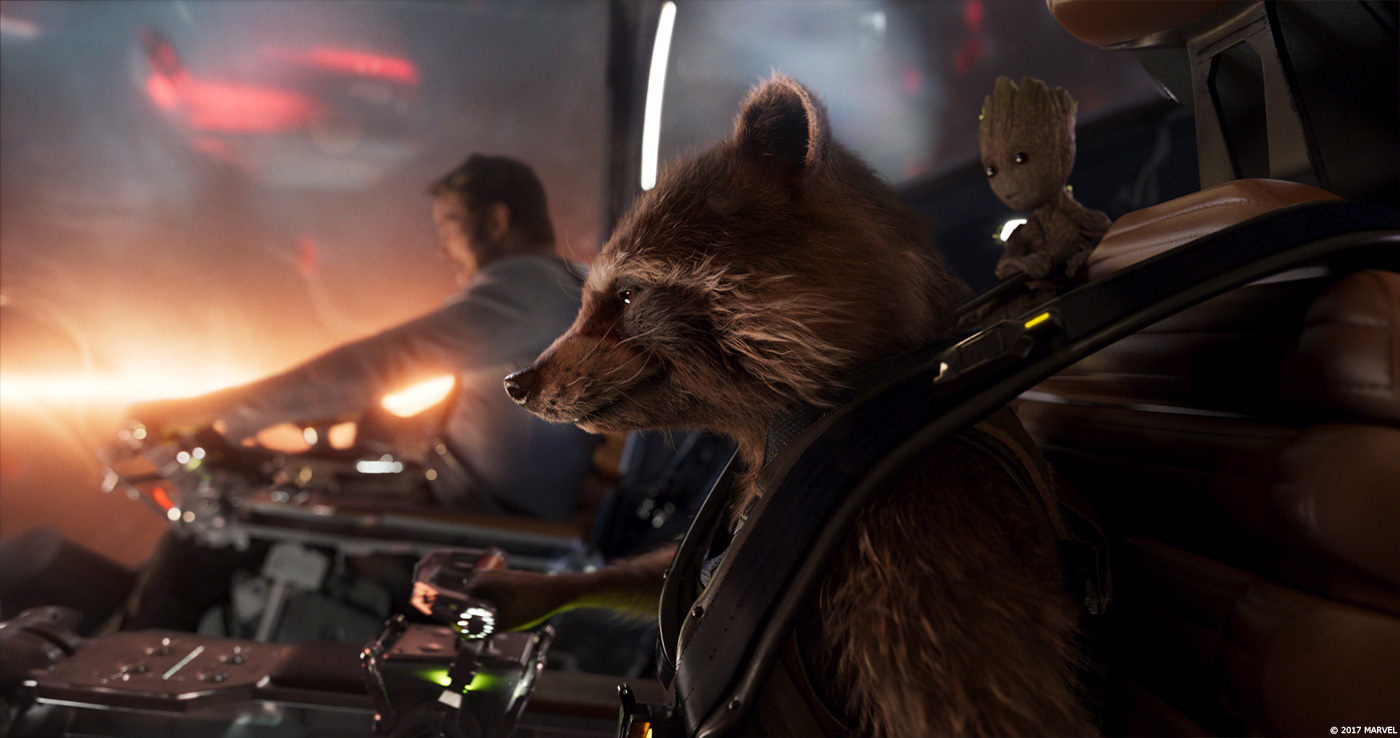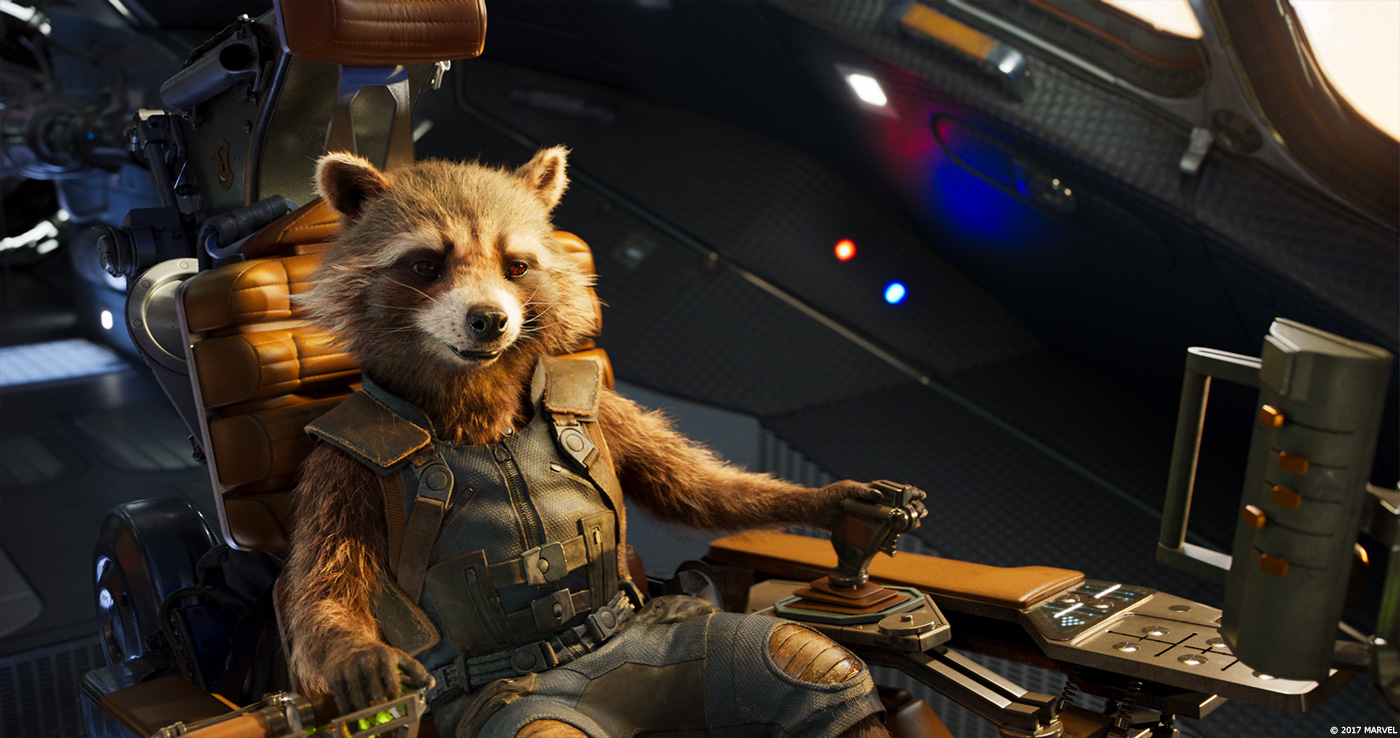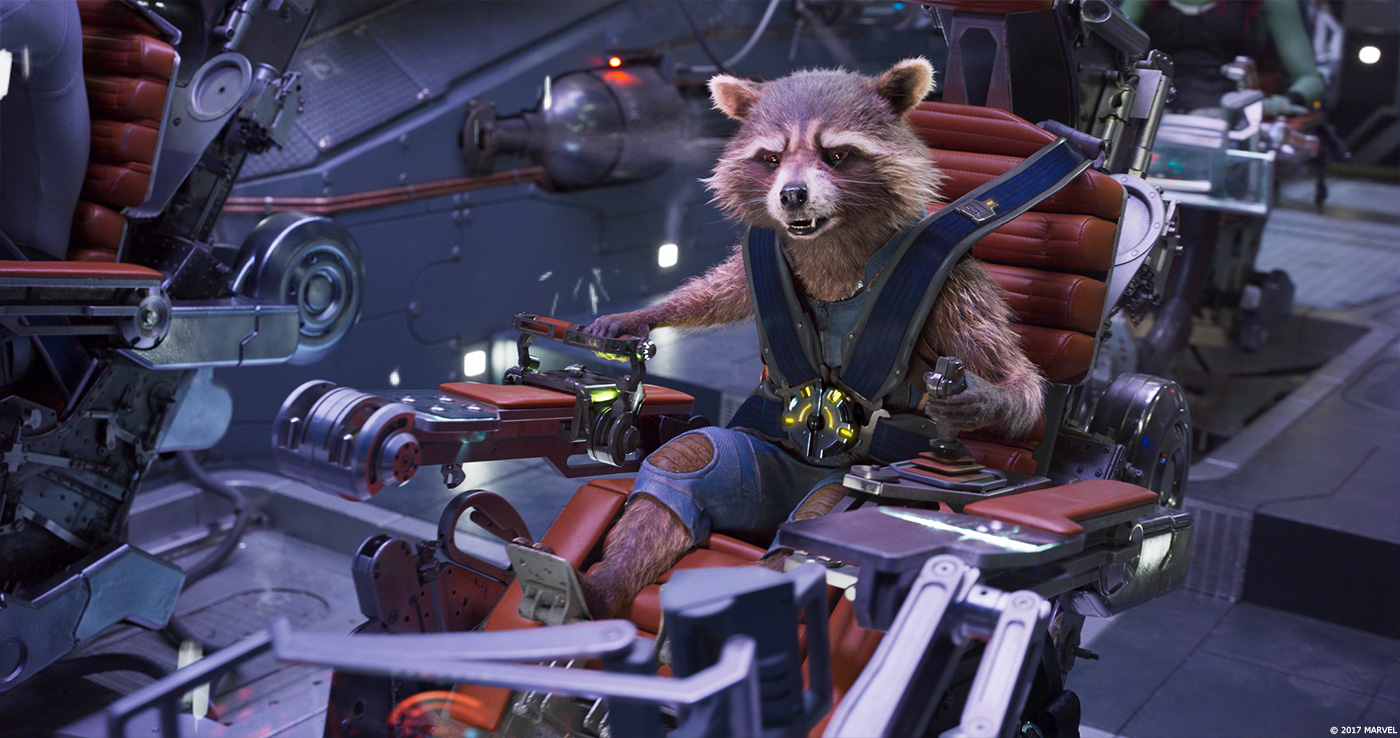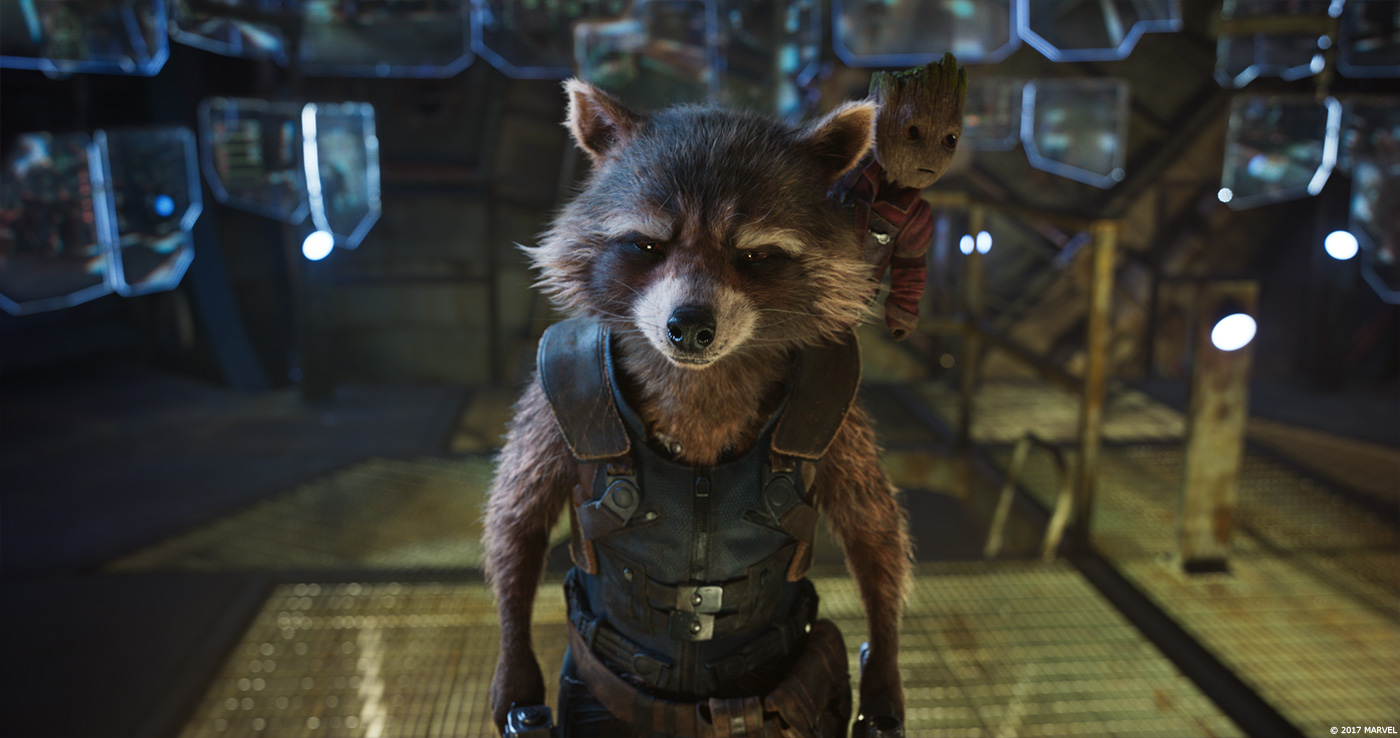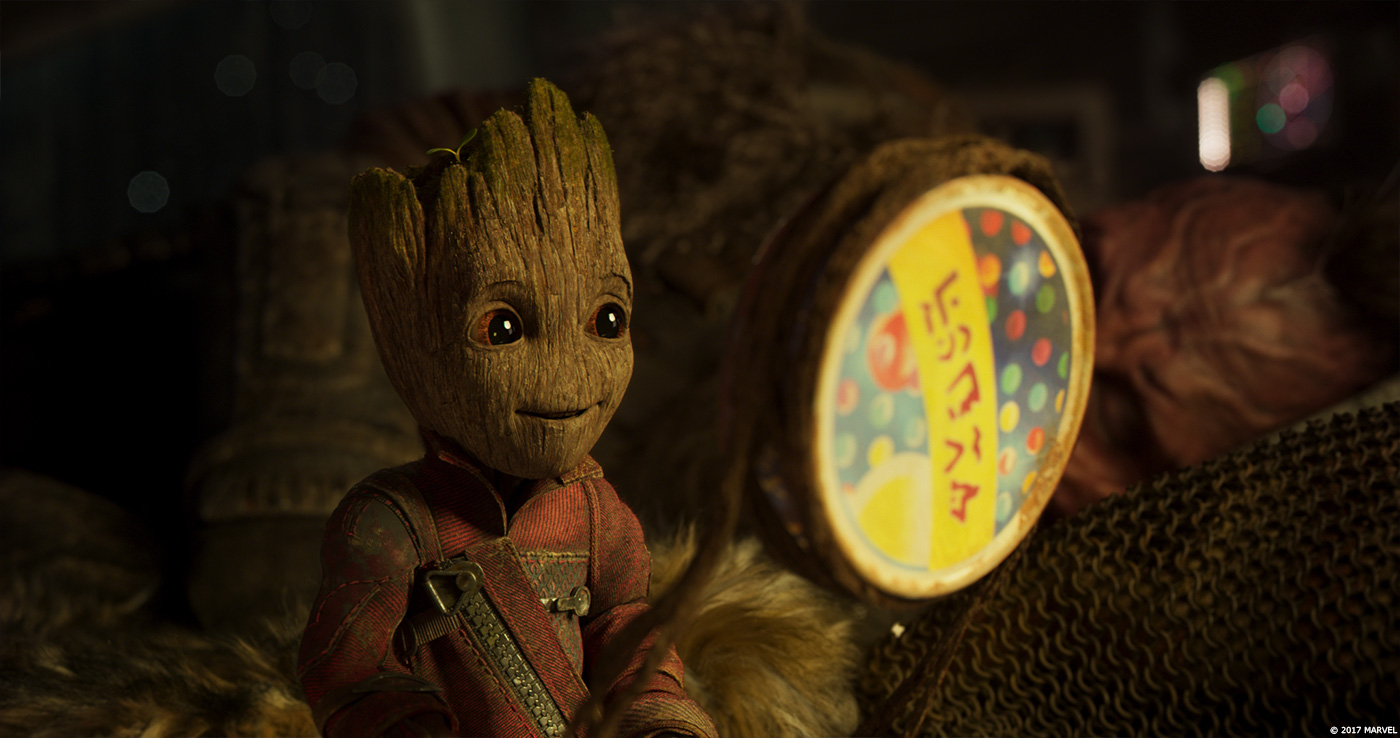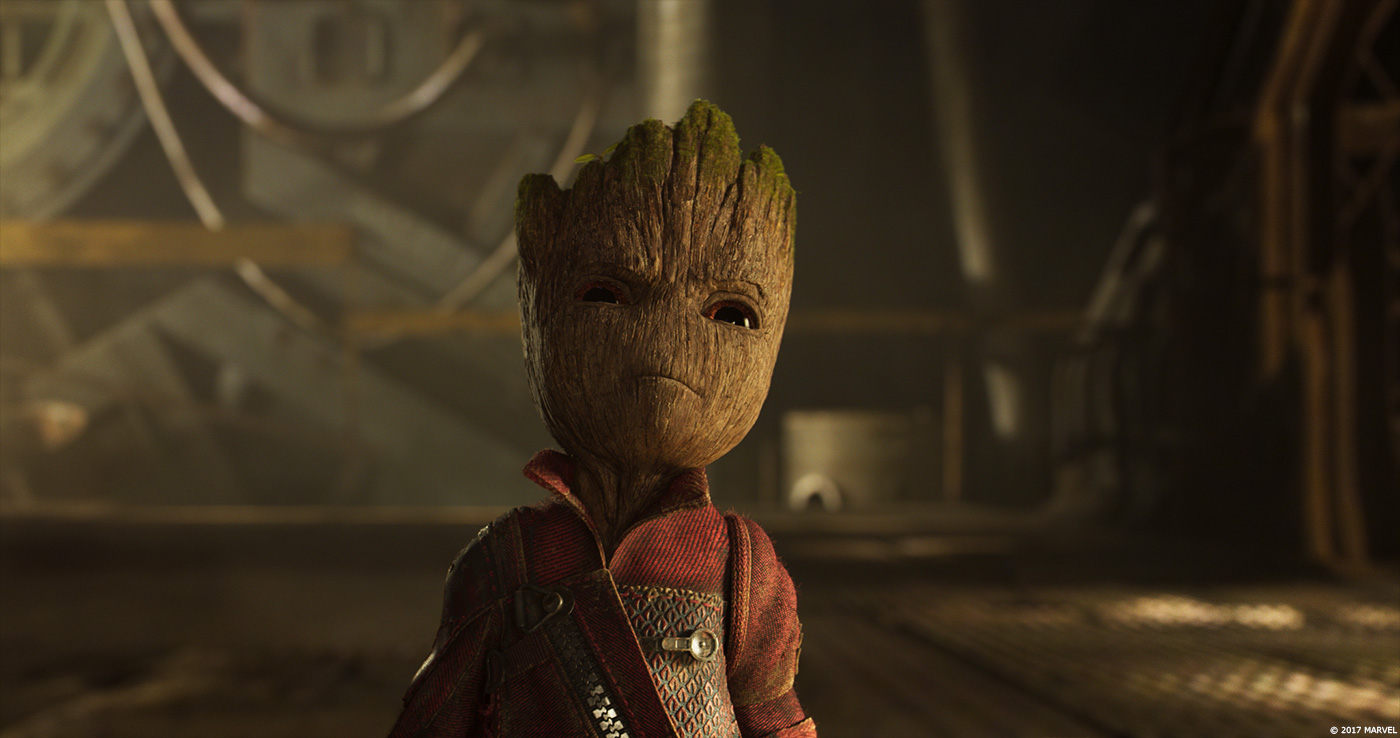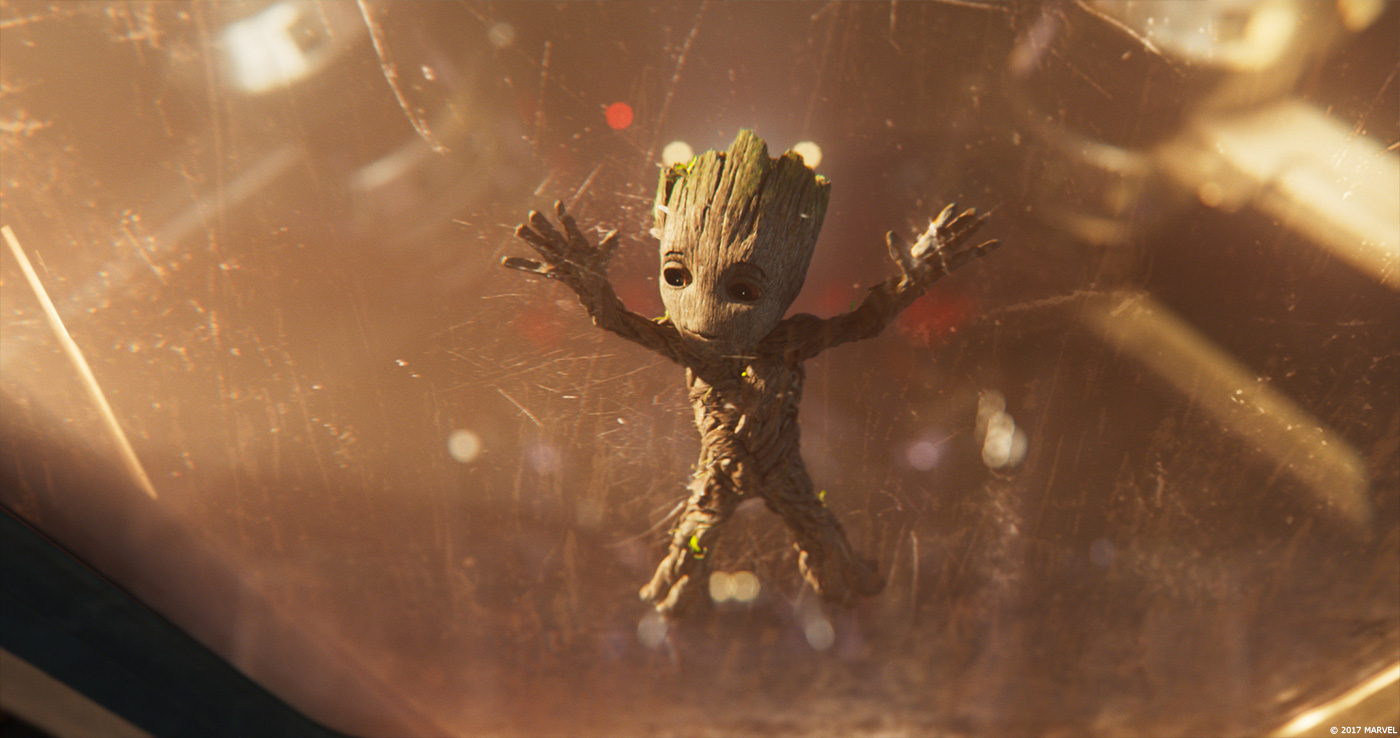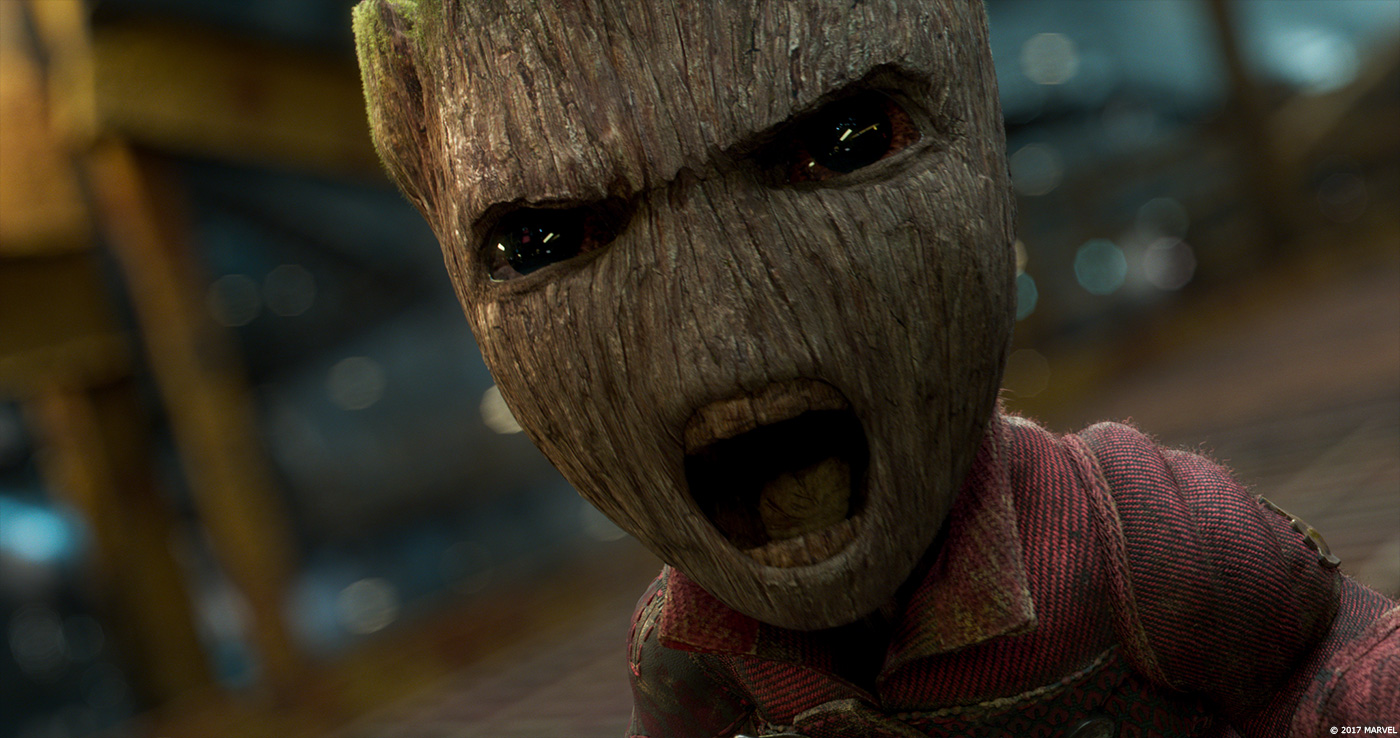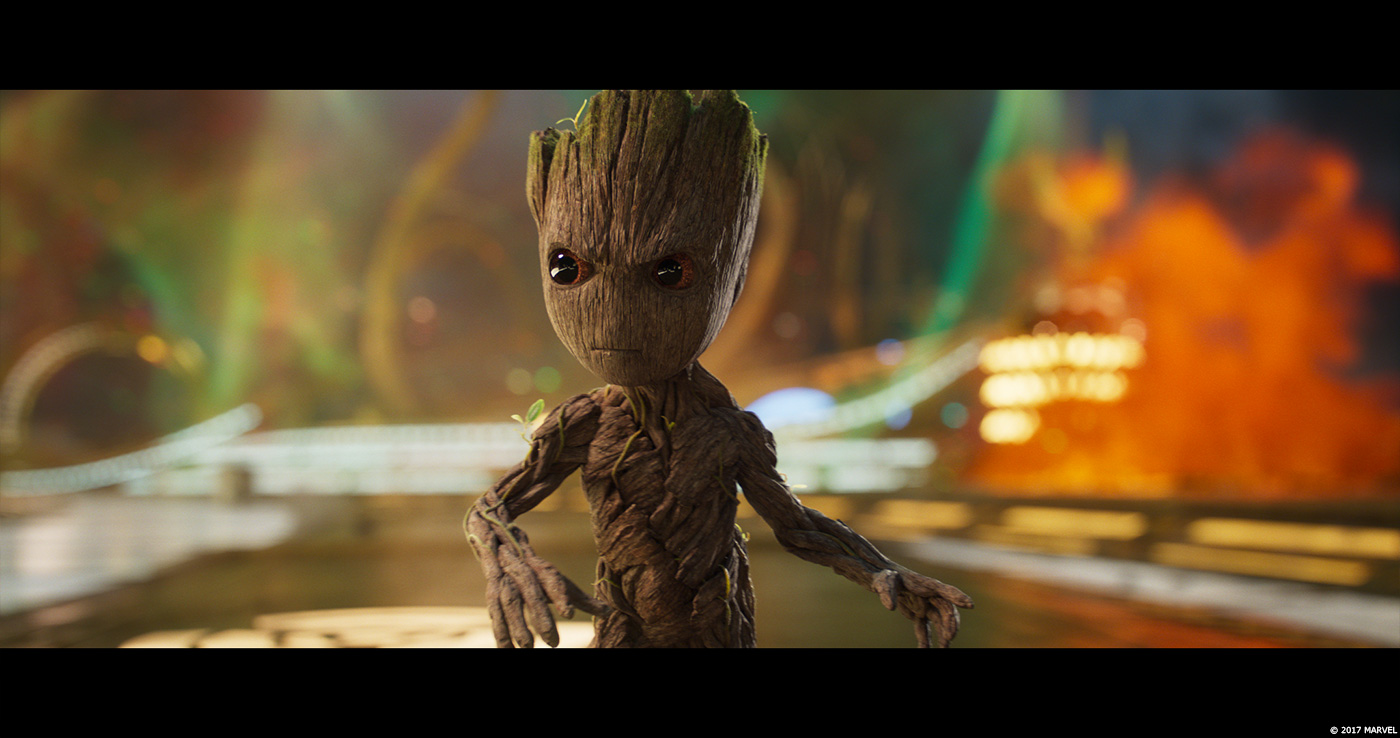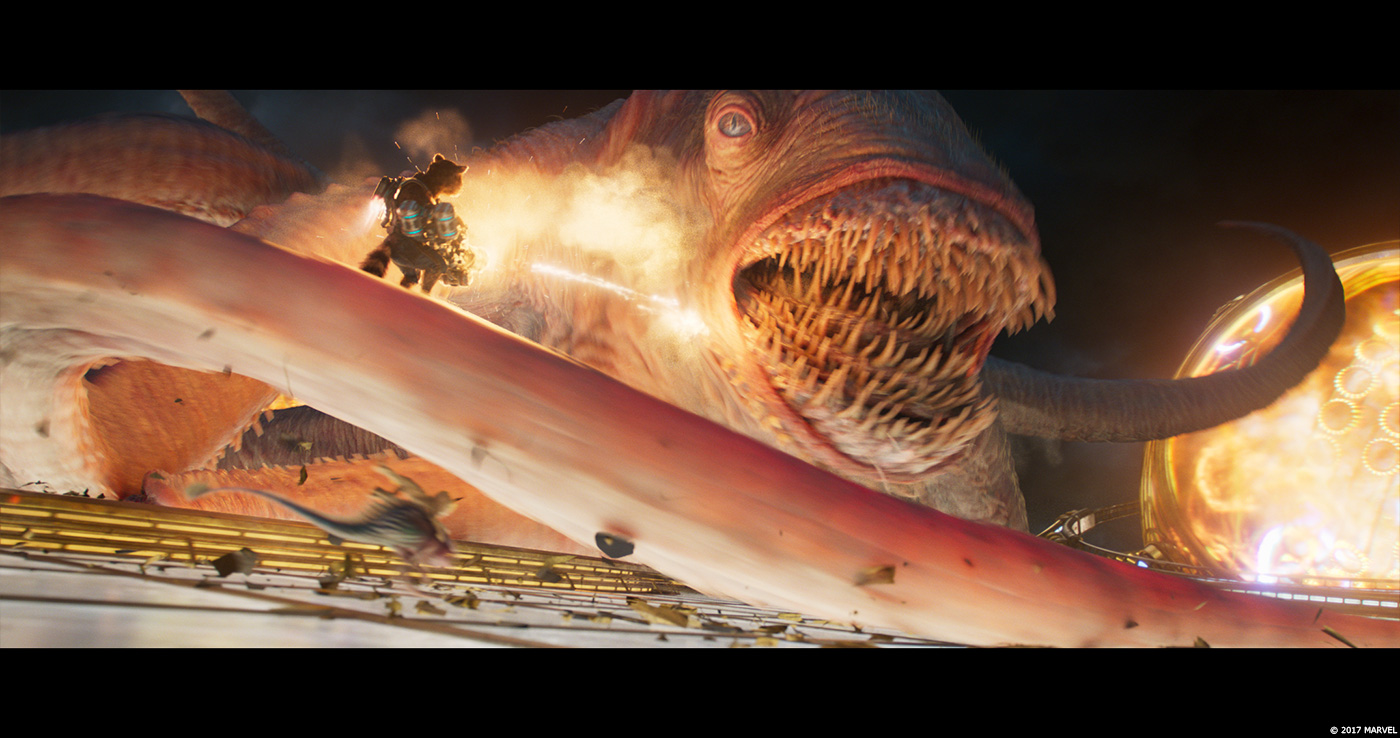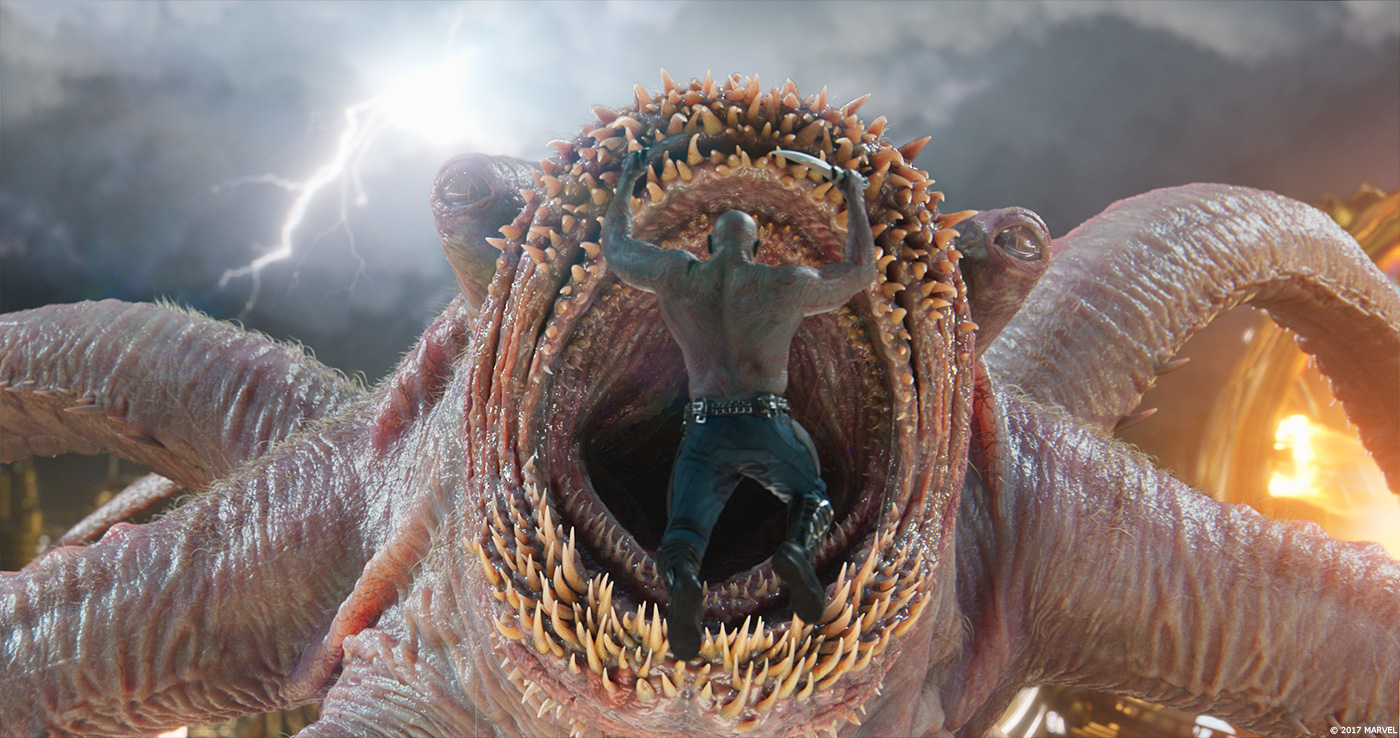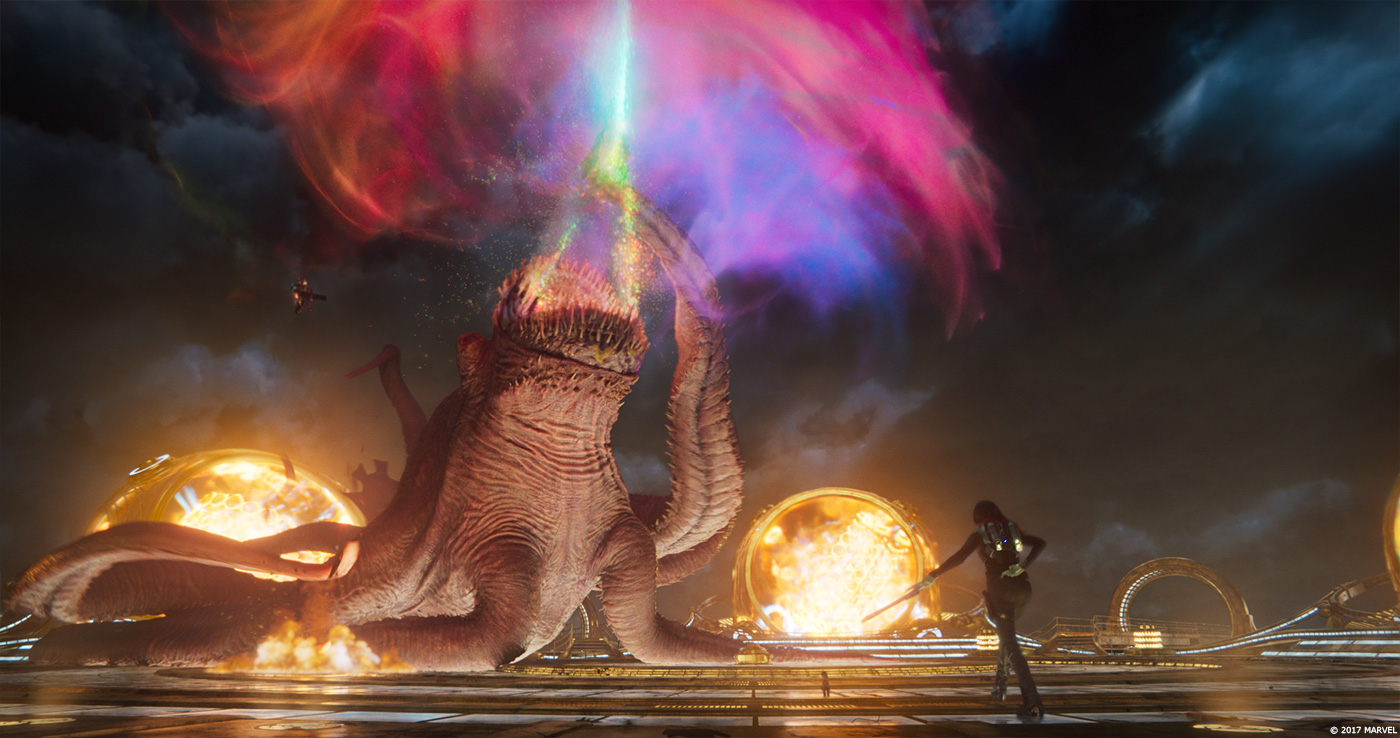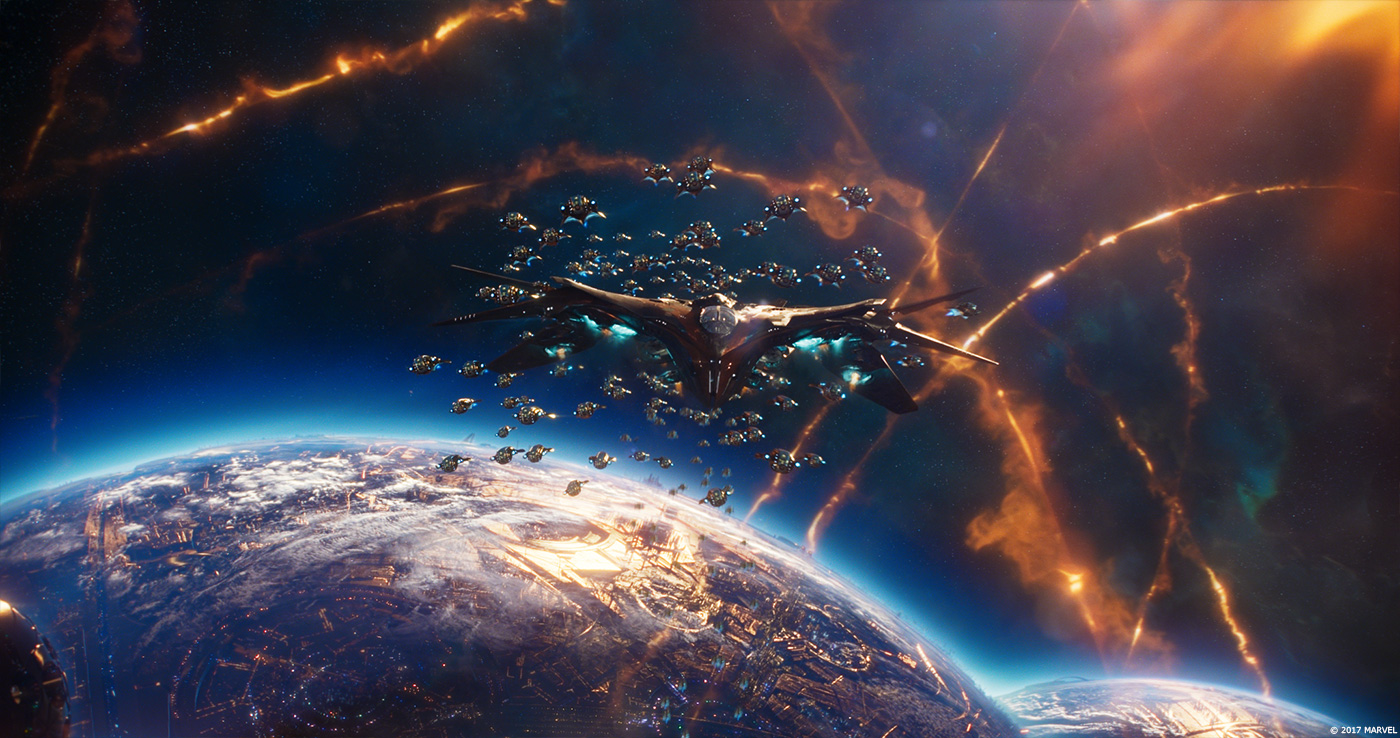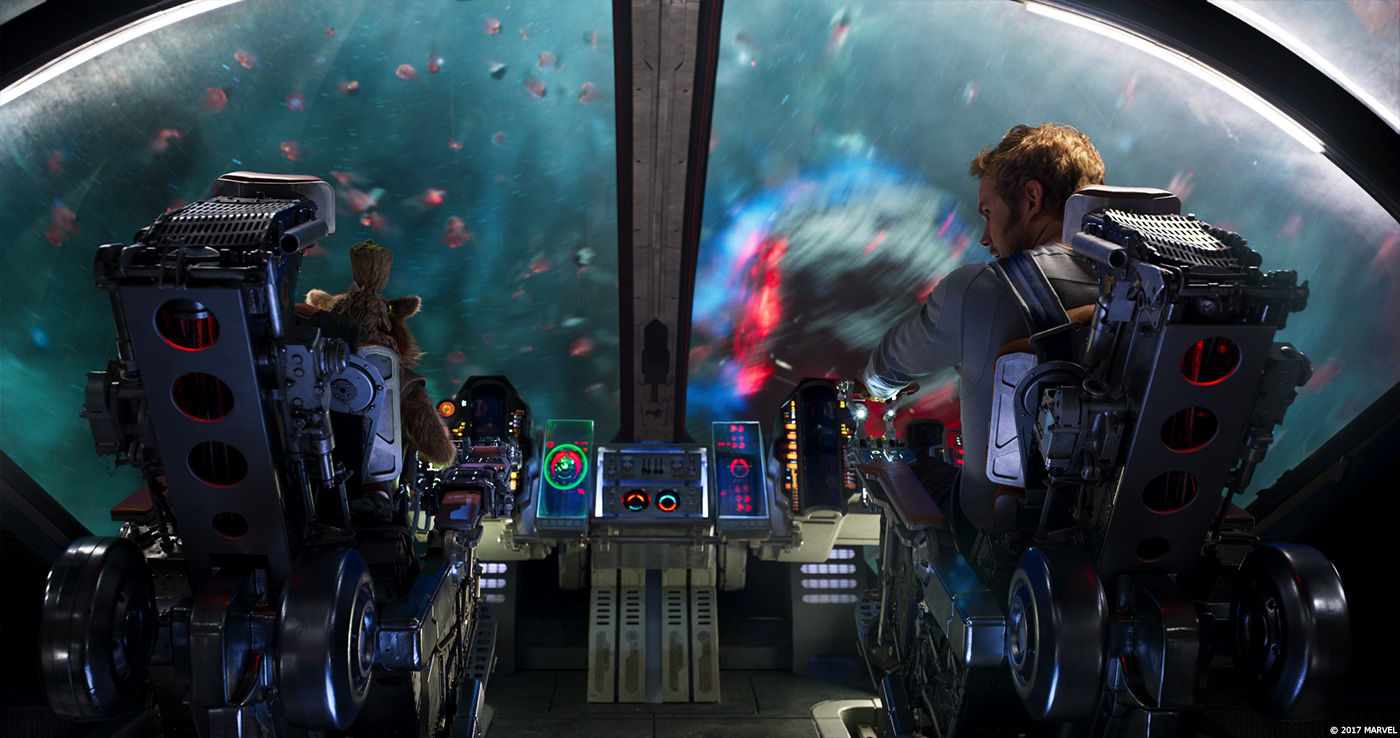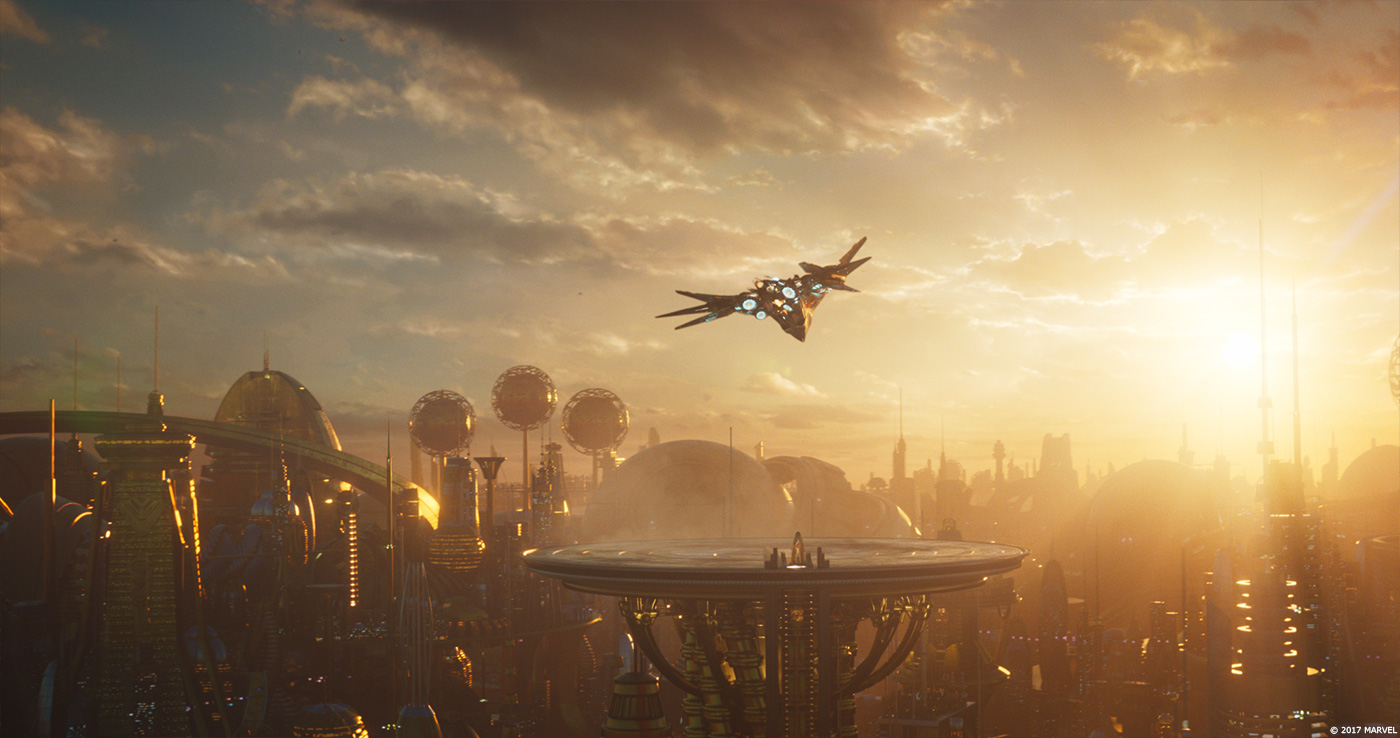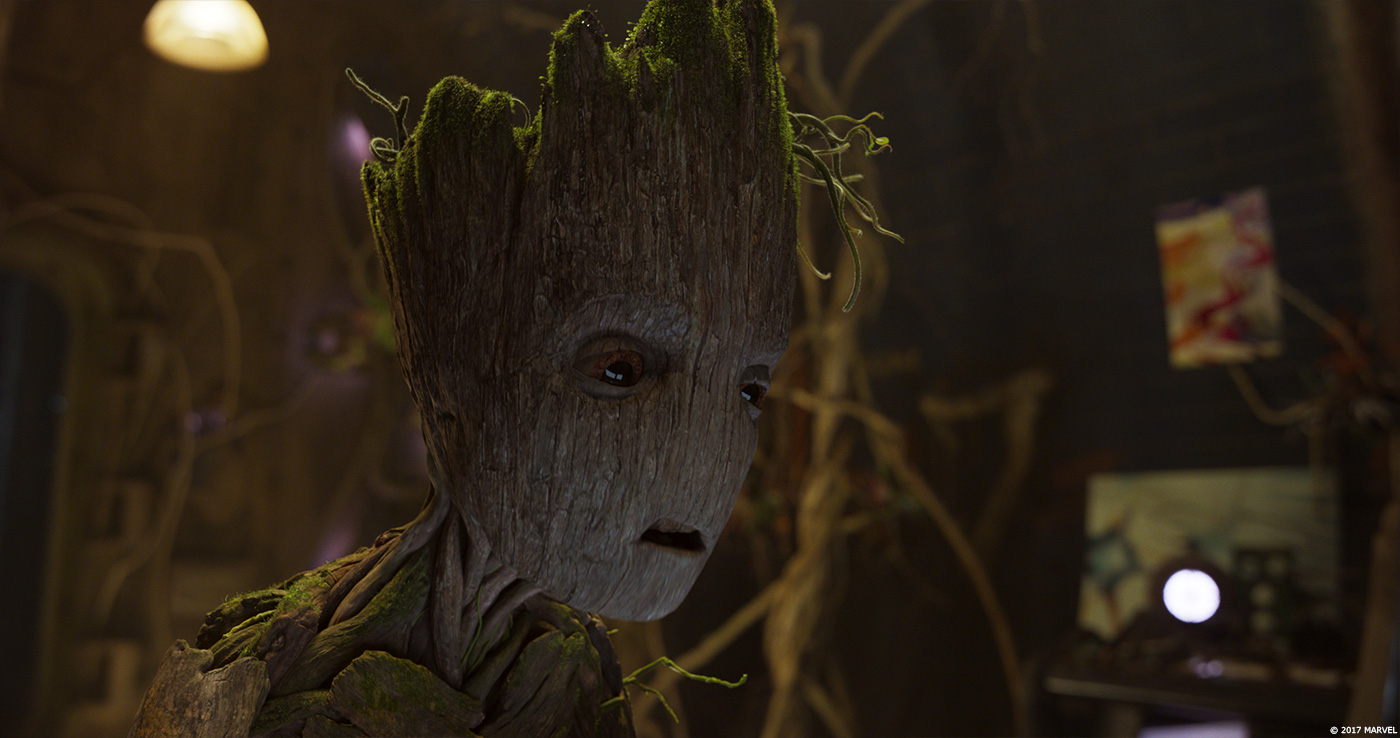In addition to Framestore, Arslan Elver has worked in numerous studios such as Prime Focus, MPC and Industrial Light & Magic. He has worked on many films such as THE GOLDEN COMPASS, MALEFICENT, GUARDIANS OF THE GALAXY and STAR WARS: THE FORCE AWAKENS. He is back in the Marvel universe today by talking about GUARDIANS OF THE GALAXY VOL 2.
How did you feel returning to the Guardians of the Galaxy films?
It was a great feeling actually. I worked on the first GUARDIANS OF THE GALAXY and I loved working on it. James Gunn is a great director who knows what he wants. Framestore built Rocket on the first film and I truly enjoyed his character and performance.
How was the collaboration with director James Gunn this time around?
GUARDIANS 2 was overall a bigger project, James pushed the boundaries massively. He heavily pre-vised and post-vised the sequences. I think edits were quite tight when we received them. We didn’t have massive cut changes which is quite unusual in the world of VFX, so we were able to focus on the performance and nuances of character and creature animation.
He is also a very collaborative director creatively. He was kind enough to record himself as reference for Baby Groot’s dance in the title sequence which we used as a base and developed the overall performance on top of that.
For our Rocket and Baby Groot animation work, James was very quick to respond to our blocking pass and in getting the idea of the performance. If he had an idea that was slightly different he would explain it so well it would make things easier for us. I was told that he is a very actor-centric director and you could really tell that during the animation process. He is all about performance and he is great director. It was a pleasure to work with him.
What was his approach and expectations about the visual effects?
James is a very hands on director when it comes to creative CGI work. He understands the process greatly and he has a lot of passion for his work, especially for his CG creations. He really knows these characters inside out which helps massively in the production process for getting the animation completed quickly and efficiently.
What are the sequences made by Framestore?
We worked on the opening sequence where the Guardians are defending some batteries from the ‘Abilisk’ (eight-tentacled creature) which includes the fantastic title sequence. Following that, Ayesha’s Lair where the Guardians collect their prize. We then worked on a Space chase (Soverign omnicrafts chasing Milano). We then worked on sequences within Yondu’s ship in Eclector; that covers Taserface threatening Rocket, Baby Groot being bullied, Baby Groot mixing up objects to bring to Yondu and Rocket and then when they break out of the prison.
Overall it was a fantastic mix of work. From creature to spaceships to great performances of 2 fully CG characters.
How did you approach a show with so many VFX shots?
Head on! For character performance heavy shots, we shot reference and applied this to our blocking passes quickly so we could get feedback as fast as we could.
For the space ships, it was a challenge rigging and choreography wise. We had to analyse real fighter ships to keep things grounded in reality but at the same time push them to go way faster than normal speeds.
When working on the Abilisk, we studied the motion of walruses and worked to make sure that the tentacles have interesting poses and that they work within cFX.
The Baby Groot dance (aka title seq), was a huge challenge and it was worked on for a big part of the production. We split the one long shot into 11 bite-sized shots which we assigned to a different animator. At times, we also had to split the background action and foreground Baby Groot animation to different animators to be able to keep things efficient.
Framestore created Rocket on this first movie. How did you enhance it for this new episode?
We rebuilt the asset from scratch using our latest fur and cloth sims. We also remodelled all of the shapes and took the good things from the first film and pushed the things we wanted to push.
Rocket was also treated to a makeover, with an updated fur simulation using Framestore’s proprietary tool fcHairFilters creating a photo-realistic finish.
How did you manage his interaction on set and with the cast?
There were always a pole with a red ball where rocket’s eyes are. Also a plush Rocket toy was used for lighting ref. For Baby Groot there was a fantastically cute model that was placed for actor’s eyeline and lighting 🙂
Can you tell us more about his animation and especially his face?
We did a face study of his shapes and compared them to the old Rocket. We also used a new eye rig system which was developed on FANTASTIC BEASTS AND WHERE TO FIND THEM.
Animation-wise, especially for the face, our starting point was Bradley Cooper’s filmed reference. We had helmet cam footage and a witness cam from 2 different angles. For lipsync, we took Bradley’s performance as a base, placing jaw movement and general lip shapes. When you look at Bradley and Rocket’s face cameras, they look almost identical. Unfortunately although this is a great way to kickstart the process, it didn’t always work perfectly in the animation because of Rocket’s long nuzzle. So we have to go back to basics and feel some of the shapes and push them. Also there were times we made his jaw movement bigger.
One big challenge was Rocket’s fur. Once we saw Rocket rendered with fur, some of the shapes felt different or read differently. For example, when we pushed his upper lip up, we might see some gum but when we rendered it, the fur was covering some of it. Little things like that became a second nature after a while for animators.
For the body performance, we relied on lots of in house reference we shot and analyzing Bradley’s gestures within the tone of the scene.
Can you explain in detail about the creation of Baby Groot?
This was a great process; a slightly intense one but truly enjoyable. We built the asset of Baby Groot right before ComicCon 2016. GUARDIANS OF GALAXY 2 had a long preview clip to present. We, as Framestore, had around 90 shots of that, most of them featuring Baby Groot. He was in his ravager costume which was a bonus, as it allowed us to cover some of his body. But his face was a challenge. We wanted to keep the cuteness from the maquette but also kept in mind that this face had to move. Quite quickly we realised that we had to be careful about his range. Since Baby Groot has big eyes, moving his eyebrows or mouth too much made it cartoony quite quickly.
For his body performance, our first tests showed a more baby inspired character. We looked at babies, how they move and react with their environments. James was quite clear about that when he sees the tests. It felt too human and too baby like. We removed the baby-ish clumsy movements and brought a more subtle performance which James and the team liked quite a bit. Baby Groot is almost looks like a stupid character but he is not at all. The word I liked to use during our dailies was “autistic”. He doesn’t understand things the way you and I would understand. His movements or the range of movements would be more subtle compared to Rocket…etc
What was the main challenge with this cute character?
To keep him cute but not cartoony. And make sure there is a slight alien-ness in his movements. That was a big challenge because sometimes, especially with the physical stuff, you can use reference quite closely and he ends up looking like a human in a Groot costume. The other challenge was the performance. His character is quite different to Rocket so animators animating both had to make sure that Groot was in character.
Which references and indications did you received for his animation?
For the opening title sequence, James was kind enough to record his dance performance. It was a great reference which we based our performance on. He danced on spot and our Groot was continuously walking forward. There are moments in the dance sequence which exactly matches what James is doing (he knows his characters more than anyone else!), and then there are moments where we had to come up with creative solutions to cover more distance or to make the camera work with the performance… etc. James’s reference was pure gold dust and helped us to shape the sequence.
For his acting moments, we shot a lot of reference in house with myself and animators. We looked at the first GUARDIANS OF THE GALAXY and kept in mind how he was moving when he was adult Groot. So it has to have some resemblance to his performance.
The opening sequence follows Baby Groot during a massive fight. How did you approach and create this beautiful sequence?
We split this one long shot to 11 individual pieces. The Third Floor did a great previs of the sequence which worked well, especially from camera work point of view and some of the background action. Baby Groot’s performance was yet to be found and incorporated into this long shot.
It was a very scary shot to be honest. It’s one long camera with different people are working on different parts of the sequence so continuity could be a problem between shots.
Once we’d received James’s reference, we rushed to block Baby Groot’s dance into the scene. We ingested the camera work from The Third Floor’s previs as a base and then edited it. The very first block we did was just to make sure that Groot is roughly at the right place at the right time of the sequence. After the initial block and notes from James and the studio, we attacked the sequence overall. We start to blend the the 11 individual pieces for this 1 long shot and started to block in background action which was also quite challenging to do. Basically each piece of the 11 shots was a huge undertaking – quite complex and time-consuming. It took easily half of the production time just to get the animation completed.
Can you explain in detail about the creation of the Abilisk?
Abilisk was a challenging creature. It all started with the concept. After the initial pass of the model, we realised it will be a tricky character to animate. He has 8 tentacles and each of these has a full snake rig. The rig speed was a challenge and then we had to work out what CFX is needed and how that would change the motion. It required numerous back and forth between departments.
Performance-wise some of the early tests we did came across a bit like he was moving in slow motion, so our lead animator Alvise Avati did some tests for a bunch of shots in a row to define the motion of the Abilisk which we could apply to the rest of the sequence.
The Sovereign fleet is composed of hundreds of spaceships. How did you go about creating them?
The Spaceships were a big challenge. We decided to use animation to define the overall movement of the Sovereign ship swarm. We analysed the flight of real fighting jets, such as F16’s F22’s, usual dog fight and all 🙂
The swarm rig we had was flexible enough to show our ships in low-res; we could get them to explode at a frame we wanted to and animate interesting overall motion into the path.
One of the things James kept reminding us was that they should be super fast and be really dynamic. Especially the Milano, since Quill and Rocket are the best pilots in the universe!
What was the main challenge on this show and how did you achieve it?
I think the main challenge was being able to do a show where there is a huge variety of work and to keep the consistency of quality while being agile enough for a vFX production. We had 2 CGI characters which are beloved by fans, a huge space ship sequence and an opening title sequence which was extremely complex and long.
Was there a shot or a sequence that prevented you from sleep?
I believe overall there were different things I was worried about but I’d say the long title shot was quite a big one. The complexity and duration of the shot was challenging, and also the number of characters needed to be animated in any given time was not your average shot.
What is your best memory on this show?
There are many I have to say! When we delivered ComicCon we were very proud of delivering a big amount of shots in short amount of time, not only that but at the same time finding the character of Baby Groot during the process.
It was also a great moment when we started to realise that the Space Chase sequence was shaping up and knowing that when the FX and comp kicked in, it’ll be an awesome sequence.
When we wrapped our Rocket and Groot performance shots and looked at them in 2k at the cinema in Framestore on the big screen.
When we watched the final title sequence with all its glory.
I think these were the times makes me realise, this job is tough but somehow when things go well and fall into places, it’s very rewarding to see your hard work on big screen.
How long did you work on this show?
I was on it for a year.
What was the size of your team?
At the peak it was around 42 animators. But that was for a short period. I think numbers ranged from 18 to 30 at other times. I’d like to thank all 3 leads Liam Russell, Alvise Avati and Alessandro Cuicci and our fantastically talented animation team for all their hard work.
What is your next project?
Can’t comment on it yet but hopefully another performance heavy project where I can enjoy bringing characters to life! 🙂
A big thanks for your time.
// WANT TO KNOW MORE?
Framestore: Dedicated page about GUARDIANS OF THE GALAXY VOL. 2 on Framestore website.
© Vincent Frei – The Art of VFX – 2017


